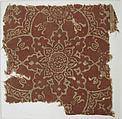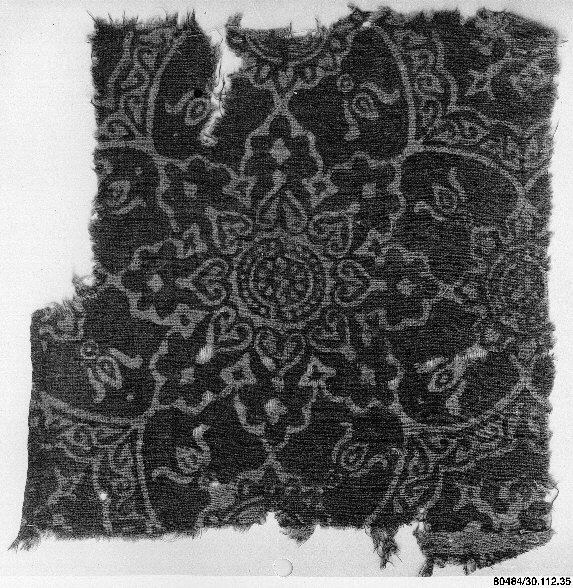Textile Fragment
Not on view
This cotton textile fragment uses block-print in its technique which is revealed in the fragment’s center and shows a horizontal misalignment of the block-printed design. The design which employs a shamsa-like motif pans out into smaller tendrils that link the medallions to one another. The pattern was probably repeated to decorate the center field of the larger textile which was enclosed within a border, a portion of which can be seen in the fragment’s top right.
Dated to either the thirteenth or fourteenth century, this fragment is one of a larger group of textiles which were found in Fustat, Egypt (known as Old Cairo) but made in Gujarat, India. The textile’s vibrant dye, which is still noticeable in this fragment highlights Gujarat as an important dye center throughout the centuries and serves as evidence that they were in high demand across regions connected by the Indian Ocean from the tenth through the nineteenth centuries.
Due to rights restrictions, this image cannot be enlarged, viewed at full screen, or downloaded.
This artwork is meant to be viewed from right to left. Scroll left to view more.



